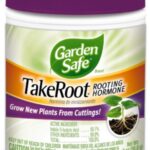
5 Best Houseplants to Grow in Low-Light Spaces

Low-light conditions refer to areas in your home that receive little natural light, such as rooms with small windows or rooms that are located on the north side of the house. While many plants require bright, indirect light to thrive, there are a number of houseplants that can survive and even flourish in low-light conditions. These plants are typically hardy, easy to care for, and can be a great way to add some greenery to your home without needing to worry about providing the right amount of light.
1. Snake Plant (Sansevieria):
Snake plants are known for their ability to thrive in low-light conditions, making them a great choice for rooms with little natural light. They are also easy to care for and are known for their ability to purify the air.
2. Pothos (Epipremnum aureum):
Pothos is a hardy, vining plant that can survive in a wide range of lighting conditions. It's easy to grow and can be trained to climb a trellis or left to trail from a hanging basket.
3. ZZ Plant (Zamioculcas zamiifolia):
The ZZ plant is a great option for low-light spaces because it can tolerate a wide range of lighting conditions. It's also known for its ability to purify the air, making it a great choice for a bedroom or office space.
4. Philodendron:
Philodendrons are a classic houseplant that are known for their ability to thrive in low-light conditions. They come in a wide range of varieties, from vining to climbing, making them a great option for a variety of spaces in your home.
5. Spider Plant (Chlorophytum comosum):
Spider plants are known for their ability to thrive in low-light conditions and are also known to be great at purifying the air. They are easy to care for, and their long, trailing leaves make them a great option for hanging baskets.



